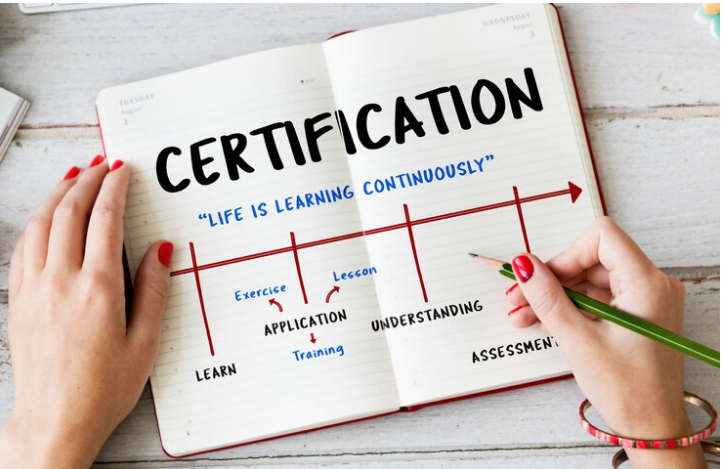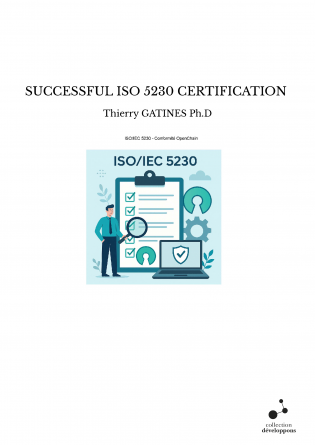ISO 5230 successful certification: the global standard for open source compliance and trust
In today’s digital economy, open source software plays a central role in innovation and collaboration.
However, without proper management, it can expose organisations to licensing, security, and compliance risks.
The ISO/IEC 5230 standard, built upon the OpenChain framework, defines the international requirements for open source compliance management.
The book ISO 5230 Successful Certification serves as a comprehensive and practical guide, helping organisations implement the standard, manage risks, and achieve certification with confidence.
Why ISO 5230 is essential for open source governance and compliance
Open source components are now integrated into nearly every software product.
Yet, many companies struggle to track licences, manage third-party code, and maintain transparency within their supply chains.
To address these challenges, ISO/IEC 5230 provides a structured framework for ensuring that open source usage is compliant, secure, and well-documented.
It defines processes for licence identification, verification, and documentation, ensuring organisations respect intellectual property obligations.
Moreover, it fosters trust and collaboration between software suppliers, customers, and partners.
By adopting ISO 5230, organisations can reduce legal exposure, improve code security, and demonstrate accountability across their software ecosystem.
As a result, ISO 5230 Successful Certification becomes an essential resource for any company seeking to professionalise its open source management practices.
A step-by-step guide to achieving ISO 5230 certification
The book offers a clear and structured methodology for implementing ISO/IEC 5230 within any organisation — from startups to global enterprises.
It breaks down the certification process into manageable phases, illustrated with practical examples.
The main steps include:
-
Understanding the standard: review the OpenChain framework and its key compliance principles.
-
Gap analysis: assess current open source practices and identify improvement areas.
-
Process implementation: establish procedures for licence review, approval, and documentation.
-
Risk and audit management: monitor compliance, evaluate third-party components, and prepare for certification.
-
Continuous improvement: update policies and training as technologies and licences evolve.
Thanks to this structured approach, the guide helps organisations develop a transparent and auditable compliance system.
In addition, it promotes a culture of responsibility, ensuring open source is used ethically and sustainably.
Practical tools, templates and real-world case studies
To make implementation easier, ISO 5230 Successful Certification includes numerous tools and templates tailored to software governance.
These include licence inventory models, risk assessment forms, process checklists, and training frameworks.
Each chapter is enriched with real-world case studies, illustrating how leading organisations have successfully implemented the standard.
These examples highlight best practices, common pitfalls, and lessons learned from actual certification projects.
Moreover, the book provides metrics and self-assessment tools to help teams monitor progress and ensure compliance over time.
Thus, it serves as both a reference guide and a hands-on manual, turning complex legal obligations into clear operational processes.
A strategic certification for digital responsibility and trust
Achieving ISO 5230 certification goes far beyond technical compliance.
It signals an organisation’s commitment to transparency, digital ethics, and responsible innovation.
Certified companies can demonstrate to clients, investors, and partners that their software supply chain is both secure and trustworthy.
Furthermore, the certification enhances brand reputation, reduces legal uncertainty, and facilitates collaboration across ecosystems.
It also supports regulatory readiness, as open source governance becomes an increasing priority in cybersecurity and data protection frameworks.
Therefore, ISO 5230 Successful Certification stands as a strategic guide, helping organisations transform compliance into a source of credibility and competitive advantage.
Fiches techniques

Normes ISO disponibles
par thierry.gatines | Août 11, 2025 | Fiches techniques

Audit ISO les erreurs à éviter
par thierry.gatines | Août 11, 2025 | Fiches techniques

Les étapes clés de la certification ISO
par thierry.gatines | Août 11, 2025 | Fiches techniques

